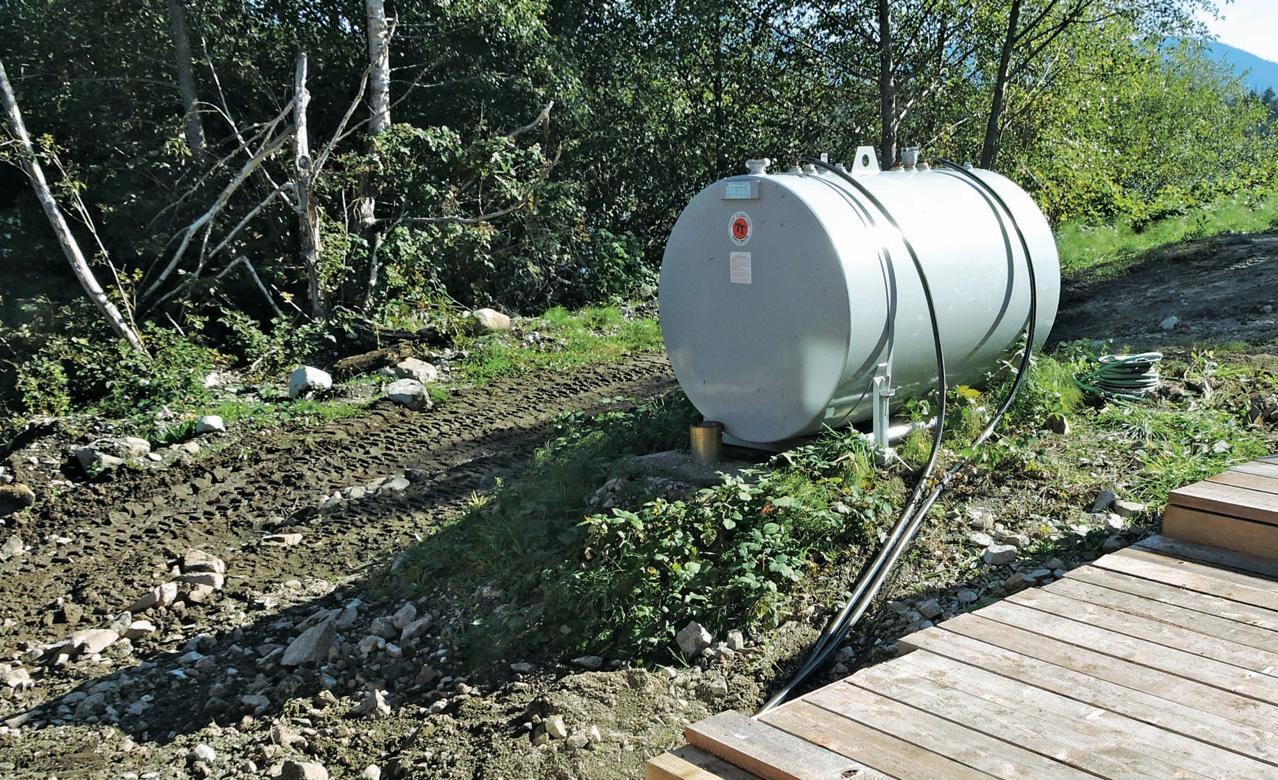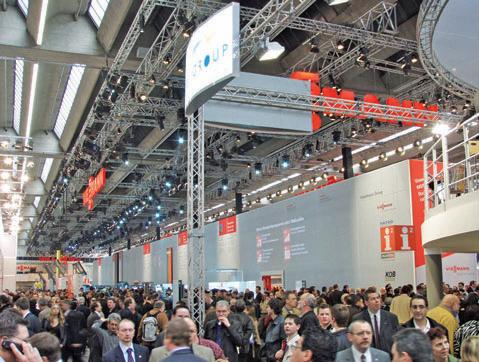
6 minute read
Hydronics
from March 2022
One opportunity for hydrogen boilers would be to replace fuel-oil tanks with hydrogen tanks.


Utilizing zero-carbon hydrogen to store and carry energy could help heat indoor environments. By Roy Collver
here are three fundamental ways we can arrive at a zero-carbon future for our built environment. In order of importance, the HVAC industry will be a large player in each of them. 1. Increased energy efficiency and conservation. 2. Using renewable energy sources to electrify everything we can. 3. Replace existing fossil fuels with zero-carbon alternatives.
This article is focused on point number three; specifically, the utilization of zerocarbon hydrogen as a way to store and carry energy to help heat our indoor environments.
In the current scramble to try and decarbonize, strong forces are promoting the use of hydrogen gas as a fuel to produce heat in traditional combustion appliances or generate electricity via catalytic fuel cells.
I believe we definitely have the oil and gas industries on board in our efforts to transition to a carbon-reduced future. They have expertise and experience in using fossil fuels to produce industrial hydrogen, the knowledge and talent to be able to store
Continued on page “37”

Oftentimes in more remote locations, there isn’t access to pipelines, which presents an opportunity for hydrogen tanks to be retrofitted into the system.
Continued from page “35”
and transport such a dangerous product, and the money for the needed research, development and infrastructure to expand into producing heating fuel. BUT — they must figure out how to keep the carbon dioxide from traditional hydrogen production methods out of the atmosphere (blue vs. grey hydrogen) or the whole effort is wasted.
The renewables industry is pumped about (green) hydrogen production through electrolysis, since it will give them another storage solution for excess energy produced by solar PV and wind farms, and a carrier to move that stored energy to off-site locations. How will this play out for an HVAC industry trying to de-carbonize?
Heads-up
Because of their natural resource challenges, it is no surprise countries over in Europe and Britain are all over this, needing to fast-
track green hydrogen as a solution. They are simultaneously trying to wean off fossil fuels, shut down their aged nuke plants and avoid being held gas-hostage by other countries — a most difficult hat-trick. British gas utilities are particularly aggressive with hydrogen appliance research and development, as well as distribution pilot projects in order to establish proof of concept.
There is a lot of buzz and misinformation about hydrogen, and I have had several enquiries, so the takeaway from this article is that hydrogen utilization will be coming to Canada, and it will be here in various forms very soon.
We are a long way from electrifying everything we want to, and I am an optimist when it comes to de-carbonization. I believe that the urgency of the current situation
is driving innovations in so many new directions, and so rapidly, that we will be hard-pressed to keep up. So, don’t turn your back on innovations or you just might be washed away by the big waves roaring up the beach behind you.
Is it not fair then to ask, what’s not to like about hydrogen boilers? They should pretty much be plug-and-play for existing hydronic heating systems, be able to deliver high output on-demand just like their fossil fuel cousins, and have zero carbon dioxide stack emissions.
The bad news is there are currently no residential or commercial 100 per cent hydrogen boilers available in Canada (or anywhere else I know of).
Picking up speed
I have discussed this with high-level folks at two innovative boiler manufacturers with distribution in Canada and they confirm that their phones are ringing. The interest from utility companies is keen, getting stronger, and they have both the money and motivation to kick-start this development immediately.
There are problems inherent in using hydrogen as a heating fuel, so don’t expect hydrogen to just flat-out replace natural gas (here comes my Gasfitter 1 background). The properties of hydrogen versus natural gas can be detrimental to happy utilization. For instance, flammability limits of hydrogen are four per cent (low) to 75 per cent (high), while natural gas has the limit of 4.5 per cent (low)

I believe that the urgency of the current situation is driving innovations in so many new directions, and so rapidly, that we will be hard-pressed to keep up.
Continued on page “39”

It is possible to retrofit a propane system to run off hydrogen with the proper modifications.
The ISH trade show in Germany had already been in talks about the research and development of hydrogen boilers more than a decade ago.
Continued from page “37”
to 14.5 per cent (high). Ignition temperatures are similar, but the wider flammability range for hydrogen means it is much more likely to misbehave if gas/air mixes wander out of the proper land.
In terms of flame speed, hydrogen comes in at three meters per second (that’s really fast), while natural gas comes in at 0.35 meters per second — this is a biggie when it comes to burner design; flashback is a serious problem to tackle (in modulating pre-mix burners especially).
The BTU per cubic foot of hydrogen is 325 BTU, and 1,000 BTU for natural gas. If we want to use pipelines, supply pressures will have to be cranked up in order to deliver the same amount. Many existing systems won’t like that, and hydrogen embrittlement of steel can hurt distribution systems.
The molecular weight of hydrogen is two, and 16 for natural gas. Hydrogen molecules can sneak through smaller spaces making leakage more likely.
Lastly, the flame temperature of hydrogen is 2,180C, and 1,950C for natural gas. This increases the challenge of preventing toxic nitric oxide production.
It’s getting hot in here
Hydrogen flames do not emit visible light and can’t be sensed by rectification devices. This means UV sensors will need to be re-designed to make them smaller and affordable. The good news is that very clever people are working through these difficulties and solutions are being found. The two manufacturers mentioned prior, and a few others, have 20 per cent hydrogen boilers available across the pond now and are busy developing 100 per cent models. British utilities are using a 20 per cent hydrogen and natural gas blend in some existing and new distribution systems right now, with the intention of converting appliances to 100 per cent hydrogen as the technology matures.
Working out the kinks
One problem with this approach is that every appliance in the house will need to be replaced or converted at the same time. There are some possible sweet spots for hydrogen use in areas without grid or pipeline services, fuel-oil and propane tanks could be replaced with hydrogen tanks for truck or boat delivery and re-fill. Clusters of industrial users can build close to hydrogen production facilities to reduce distribution issues and costs. Large input applications such as commercial volume domestic hot water heating and snow melting will add stress to the electrical grid and be very expensive when aggressive peak-load and day-of-use billing practices are implemented. Combined hydrogen heat and power fuel cell technology is available now, but very expensive. Expect rapid innovation to bring the costs down. It is too early to tease out all of the niche applications that will favour hydrogen combustion technology. Time to put on your thinking caps. :

Roy Collver is an author and consultant on hydronic heating based in Qualicum Beach, B.C. He can be reached at










